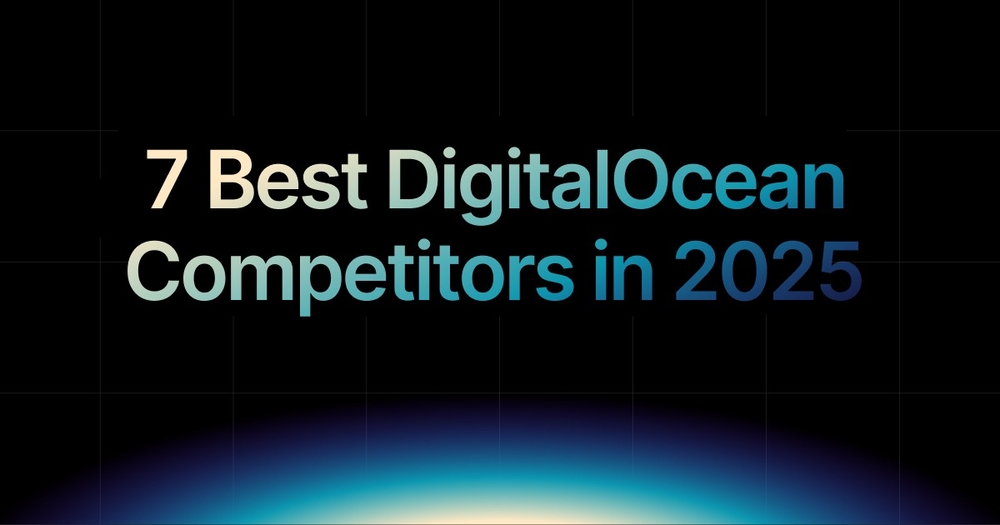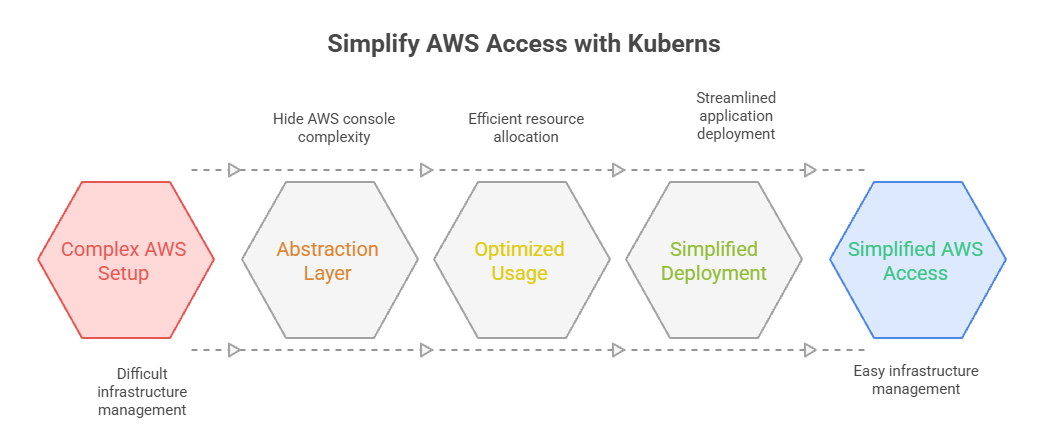Published
- 9 min read
7 Best Digital Ocean Competitors in 2026

Developers are starting to look at DigitalOcean competitors, and for a good reason.
DigitalOcean was a great choice for quick deployments and affordable hosting. It gave solo developers and small teams an easy way to get started without worrying about complex infrastructure.
But as apps grow and teams need more control, the cracks start to show. Costs go up. Built-in tools are limited. And things like scaling, infrastructure monitoring, or CI/CD require extra setup.
That’s why many teams in 2026 are moving to platforms that offer a simpler, more complete experience, without giving up performance or flexibility.
Quick Summary: This guide compares 7 top DigitalOcean alternatives that offer better pricing, built-in developer tools, and easier scaling. Whether you’re building an MVP or managing production apps, there’s a better fit for your stack.
What Should You Look for in a DigitalOcean Competitor?
(How to Pick the Right DigitalOcean Alternative)
 Choosing a DigitalOcean alternative isn’t just about lower pricing or more features. It’s about finding a platform that actually fits your workflow.
Choosing a DigitalOcean alternative isn’t just about lower pricing or more features. It’s about finding a platform that actually fits your workflow.
Start by asking: What do you need to move faster without compromising control?
Some platforms are better for full control over infrastructure. Others give you an all-in-one setup where deployments, monitoring, scaling, and rollbacks are handled for you.
Here are a few things to keep in mind as you compare:
- Ease of use: Can you deploy from GitHub in a few clicks?
- Built-in tools: Does it include CI/CD, logs, staging, and rollback?
- Pricing model: Is the pricing predictable? Are there hidden costs as you scale?
- Performance: How well does it handle traffic spikes or heavier workloads?
- Support and documentation: Will you get help when something breaks?
Your ideal alternative should match your technical needs and save you time.
Especially if you’re building an MVP, working with clients, or scaling a product, picking the right platform can make a huge difference.
Top 7 DigitalOcean Competitors to Consider in 2026
There’s no shortage of cloud platforms out there, but only a few stand out when it comes to simplicity, developer experience, and value for money.
Here’s a quick look at the top 7 DigitalOcean competitors worth considering this year.
| Platform | Best For | Key Features | Why Switch? |
|---|---|---|---|
| Kuberns | All-in-one for all use cases | AI-powered deploys, CI/CD, 40% AWS savings | Fully automated setup, no DevOps needed |
| Vultr | Low-cost VM hosting | Custom ISOs, bare-metal, global DCs | Cheap VMs with flexible instance options |
| Linode (Akamai) | Traditional VPS + Linux users | Predictable pricing, DDoS protection | Reliable VPS with strong uptime |
| AWS Lightsail | Simple AWS workloads | Easy to scale to EC2, managed databases | AWS-grade infra with simpler UX |
| GCP App Engine | High-scale apps with developer team | Serverless, autoscaling, multi-language support | Great for enterprise-scale applications |
| Northflank | Dev-focused GitHub deployments | CI/CD, staging, logs, databases, environments | Git-native platform for full dev workflows |
| Kamatera | Full infrastructure control, sysadmins | Custom VM configs, 18+ data centers | Deep configurability and global reach |
Is Kuberns the Best All-in-One Alternative to DigitalOcean?
 Most cloud platforms give you raw infrastructure. You still have to set up your own CI/CD tools, write Dockerfiles, connect monitoring services, and configure scaling policies. It works, but it takes time, and often breaks under pressure.
Most cloud platforms give you raw infrastructure. You still have to set up your own CI/CD tools, write Dockerfiles, connect monitoring services, and configure scaling policies. It works, but it takes time, and often breaks under pressure.
Kuberns brings everything together in one place.
You connect your GitHub or GitLab repo, and Kuberns handles the rest from build to deploy to rollback. There are no custom scripts, no YAML, no need to patch together a DevOps workflow with multiple tools.
What stands out is how much it removes:
- You don’t need to manage servers
- You don’t need to write pipeline configurations
- You don’t need a separate tool for logs, metrics, or error alerts
Everything you’d normally stitch together with 4–5 services is already included and works out of the box.
That makes it ideal not just for individual developers or startups, but for anyone who wants to move fast without giving up control. Whether you’re shipping an MVP, running client apps, or scaling a SaaS product, Kuberns adapts to your flow.
And because it runs on optimised AWS infrastructure, you’re not trading off performance. In fact, most teams see up to 40% lower infrastructure costs compared to self-managed AWS or traditional PaaS pricing.
Kuberns isn’t just a replacement for DigitalOcean. It’s a full developer platform that lets you deploy apps the way you actually work, fast, repeatable, and without DevOps friction.
Should You Switch to Kuberns for Simpler AWS Access?
 A big reason developers move from DigitalOcean is to access better infrastructure, especially AWS.
A big reason developers move from DigitalOcean is to access better infrastructure, especially AWS.
But using AWS directly often means dealing with complexity: IAM roles, EC2 provisioning, VPC setup, and a long list of DevOps decisions before your app ever goes live.
Kuberns gives you the benefits of AWS without the setup stress.
It runs on AWS infrastructure, but you never have to touch the AWS console.
You get high availability, global performance, and usage-based scaling without having to learn Terraform or manage EC2.
And because Kuberns optimises usage across workloads, you get up to 40% lower AWS costs compared to running everything on your own. There are no platform fees, and you only pay for what your app actually needs.
For most developers, that translates to simpler deployment and real savings, especially if you’re scaling fast or managing multiple apps.
You get the global reliability and performance of AWS, without needing to manage AWS. And you save up to 40% while you’re at it.
Try Kuberns, Without the DevOps Complexity or Extra Cloud Costs
With Kuberns, you don’t need to set up CI/CD pipelines, manage servers, or connect five different services. You just connect your repo, and everything’s ready: deployment, logs, monitoring, scaling.
All in one place.
It’s built on AWS infrastructure, so you get the performance and reliability.
Deploy your next app with Kuberns It takes just a few minutes to connect your repo and go live.

Frequently Asked Questions
1. What is the best alternative to DigitalOcean in 2026?
For ease of use with built-in CI/CD and monitoring, Kuberns is a strong all-in-one alternative. It’s especially helpful if you want to deploy apps quickly without managing servers or DevOps pipelines.
2. Is Kuberns better than DigitalOcean?
Yes. Kuberns offers CI/CD, logs, monitoring, auto-scaling, and rollback, built in. You don’t need to connect extra services or write configurations. It’s faster to set up, easier to manage, and runs on AWS with up to 40% lower infrastructure costs.
3. Do I need DevOps knowledge to use Kuberns?
No. Kuberns is designed to simplify the entire deployment process. You just connect your GitHub or GitLab repo, and everything else from build to monitoring is handled for you. It’s built for developers who want to focus on code, not infrastructure.
4. Can Kuberns scale with my app?
Yes. Kuberns handles auto-scaling, load balancing, and performance monitoring behind the scenes. As your traffic grows, your app scales automatically, without needing to configure anything manually.
5. Does Kuberns replace tools like GitHub Actions or Heroku?
Yes, Kuberns includes CI/CD, staging environments, monitoring, and more. So you don’t need GitHub Actions, a separate PaaS like Heroku, or external monitoring tools. It replaces multiple parts of the stack with one unified developer platform.